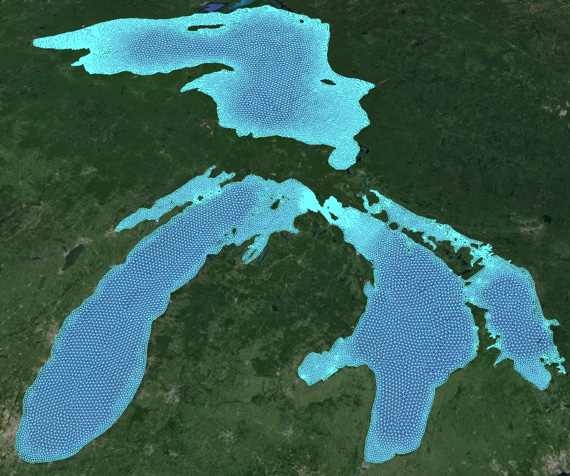
By Char’Mane Robinson, NOAA EPP/MSI Scholar
My name is Char’Mane Robinson and I’m working this summer at NOAA Great Lakes Environmental Research Laboratory (GLERL) as a NOAA Educational Partnership Program (EPP) with Minority Serving Institutes (MSI) Scholar. I will be receiving a BS in environmental science with an emphasis in natural resources at California State University, Monterey Bay (CSUMB). The NOAA EPP with MSI is a federal STEM (Science, Technology, Engineering, and Mathematics) educational program, preparing for diversity and inclusion in the workforce for NOAA and the NOAA mission-related enterprise. My program provides for two summer research experiences to undergraduate students from minority serving institutions. These summer research experiences were set up to help students further achieve their career goals through the development of enhanced academic discipline and professionalism needed for success as future NOAA employees.
My research here at GLERL has focused on modeling the growth potential of Asian carp in Lake Michigan. I am working with guidance from Drs. Ed Rutherford (GLERL), Doran Mason (GLERL), Mark Rowe (Cooperative Institute for Great Lakes Research (CIGLR)), and Hongyan Zhang (CIGLR), Peter Alsip (CIGLR), and Henry Vanderploeg (GLERL). This research experience is helping me to better understand how to use advanced software to make models that predict future environmental conditions used to inform management strategies for invasive species like Asian carp. Being new to modeling, it was important for me to have a great group of mentors who could teach me the fundamentals of using advanced programming software R to perform model calculations and then analysis. While it’s been a challenging project, I have learned so much, especially as I work on adjusting my model to get realistic output.
As a NOAA EPP/MSI Scholar last summer, I worked in Silver Springs, Maryland analyzing polychlorinated biphenyls (PCBs) in the fish species from Cocos Lagoon, Guam. In addition to my research studies, I am a pivotal leader in my community, mentoring lower division students in applying for STEM research opportunities. I speak to underrepresented middle school students from the local community about the importance of going to college and about careers in the STEM fields. I bring to the EPP/MSI program my education, research, leadership, and a strong commitment to becoming a future NOAA employee.
One important observation I have noticed throughout my time as a college student and as an intern in the environmental sciences is the lack of minority representation in the scientific community. This includes underrepresentation of women, racial/ethnic minorities, native Americans, people with disabilities, among others. I think it’s important to work on cultivating a more diverse workforce which is in everyone’s best interests. In recognizing the value of diversity and inclusiveness, NOAA has created educational programs to build a more diverse workforce. NOAA education initiatives are actively seeking accomplished underrepresented students at the undergraduate and graduate levels to develop their workforce with equal representation.
As an EPP/MSI Scholar, I view diversity in the workforce as way to embrace each other’s differences and have an open discussion with each other, no matter who we are, where we come from, and what we do in our life experiences. I am incredibly grateful to NOAA’s EPP/MSI Undergraduate Scholarship Program for giving underrepresented students on the undergrad level, such as myself, the opportunity to work with NOAA scientists.
The world needs—now more than ever —scientists who not only conduct significant research but also can understand cultural differences to explain those results to the every single member of society. I also strongly believe that we need to educate the public to become more environmentally aware and empower all citizens to support political initiatives that protect and preserve our planet for future generations to come.




